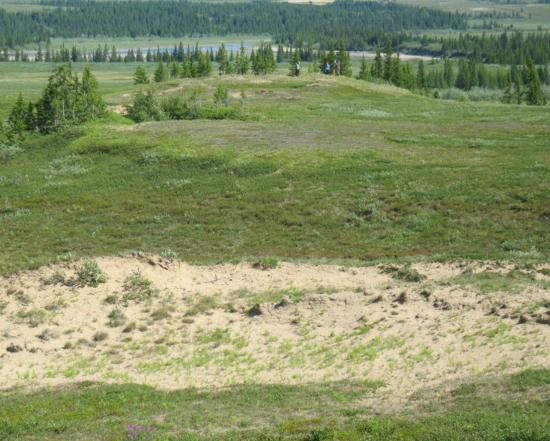Source - http://sputniknews.com/art_living/20150701/1024082661.html#ixzz3effx969y
Archaeologists in northern Russia set out to study an ancient ritual sacrifice site, associated with Biblical prophecies by one filmmaker, in a race against time as soil erosion continues to sweep away the artifacts.
In a forgotten part of northern Europe, archaeologists set out to study the ritual sacrifice site of the Heybidya-Pedar (Sacred Forest in the Nenets language) in Russia's northern Nenets Autonomous Area.
The massive six-sided ancient temple, in the shape of a hexagon, was discovered accidentally in 1947 by renowned geologist Georgiy Chernov. In 1967, archaeologists found steel jewelry and weapons, and the site later led some esoteric enthusiasts to speculate that it could be the home of Biblical figures Gog and Magog, often connected with "end times" prophecies.
Other discoveries at the site include figurines of reindeer and pottery with reindeer designs. The site is linked by archaeologists to the local Nenets people, who attach spiritual significance to it.
"Imagine a temple in the shape of a hexagon, 13 meters long, oriented on the north-south line, with a gable roof and a floor covered in a bright-red mineral paint which has preserved its freshness to this day. And all of this in the Polar region, where the survival of humans is itself questioned by science!" filmmaker Vyacheslav Mescheryankov wrote of the 1967 expedition.
Site reports from the 1967 expedition and from 2012 do not mention the shape of the site or any particular hexagonal features, suggesting that the description may have been a product of the filmmaker's creative license.
Archaeologists have a limited amount of time to recover the rest of the site before soil erosion destroys it. The new study aims to unify the ritual sacrifice site with other finds in the area with older findings of metal weaponry and jewelry dating back to the 6th century.
 Heybidya-Pedarsky sacrificial place - © PHOTO: NAOMUSEUM
Heybidya-Pedarsky sacrificial place - © PHOTO: NAOMUSEUM
According to Mescheryankov, local Nenets people have a legend that from time to time, the frozen earth at the site opens up and forms an entrance to the underground Kingdom of Sirtya, a people who live underground and predate the coming of Nenets people to the area in Nenets mythology.
After the site was first discovered by Chernov, the artifacts found there were dated to two distinct periods, the first millennium and the 13th and 14th centuries. Archaeologists later studied the site several times since 1967, finding more weapons and armor.
Ritual sacrifice remains part of the tradition in the area, although much more modest than in days past, when reindeer were sacrificed to deities.
"Coming to the edge of the Sacred Hill, which steeply overhangs the river, we made a ritual sacrifice: each of us buried a commemorative Soviet rule coin and burned several bundles of dry grass over it," Mescheryankov wrote.
Past archaeological expeditions have found the artifacts from the site to date from the 6th to the 14th century, with a distinct break in the type of artifacts found dated after the 9th century.